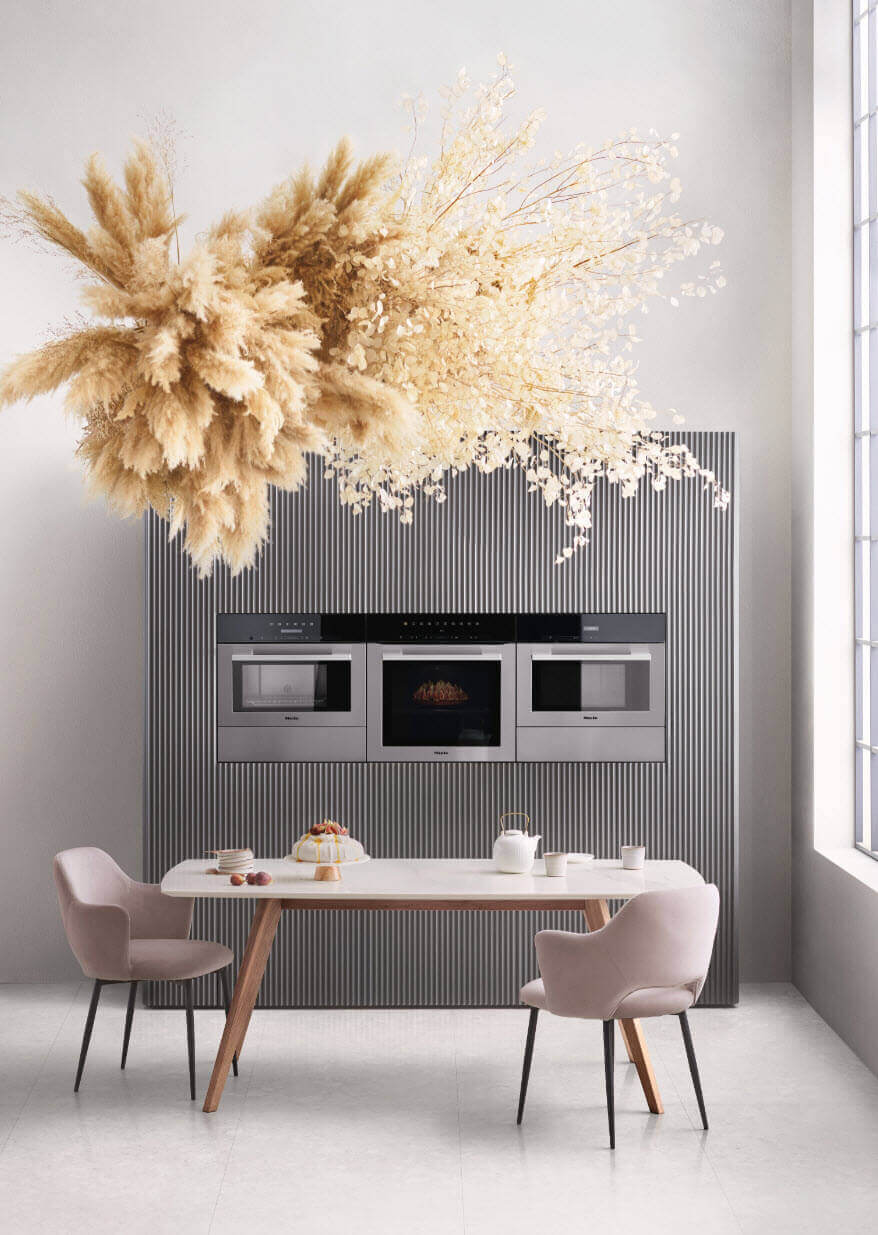From Open Entertaining to Hidden Appliances: Luxury Kitchen Design in 2017
We spoke with two leading designers who shared their inspiration and insights on the top kitchen design trends and ideas for 2017.
Louise Swan of Swan Studio Sydney and Sue Carr from Carr Designs in Melbourne identified five kitchen design ideas that are set to change the look and feel of Australian kitchens in the year ahead
Open entertaining
The concept of entertaining takes on an entirely new meaning in 2017, as ambitious home cooks inspired by the rising popularity of cooking shows make meal preparation and cooking an integral part of the dinner party experience.
“In the 1950s to 1970s we had walls separating kitchens from dining areas. Guests would wait in the dining room, restaurant style, for the perfection to emerge,” said Louise Swan.
“We then moved in the 80s and 90s to semi-concealing the kitchen with up stands that hid benches and sinks.
“Today, eating and entertaining is deconstructed and meal preparation is in full show. We want our family and even our guests to help chop, clear, taste and test. Kitchen design is reflecting this. The accent is on cooking that is handmade, personal and relaxed.”

Bench dominated kitchens
Dominant and expansive kitchen benches are back in a big way.
A large bench creates a space where appliances can be concealed and friends and family can get together.
“The island bench is a multipurpose element. It’s a congregation point, a place for meal preparation, serving and entertaining, and it is the centerpiece of the home,” said Sue Carr.
Less is more
Minimal design is set to be a big focus in kitchen design in 2017 as a counterweight to our increasingly busy lives.
“People’s need to find solace is heavily influencing design,” said Sue Carr.
“As emails, Internet, social media and work continue to infiltrate our domestic life, our homes have to be restorative and restful; they have to feed and nurture us. In this fast moving and complicated world, people are craving simplicity.”

Getting back to nature
A yearning to connect with natural environments and products forms part of that search for simplicity in terms of the materials that are used in kitchen design.
“The need for relaxation and desire to ‘get back to nature’ continues to influence our material palette and forms,” said Sue Carr.
“We are starting to use more organic natural materials like timber and stone, and juxtapose these with smooth, neutral monastic forms. The character and the innovation is all in the details.
“With this need to provide calming, relaxing spaces, we continue to choose colours that are cool, restful and subtle such as whites, chalks, ivory, and every permutation of grey.”
This interior design trend even extends to the way the kitchen relates to outdoor living spaces says Louise Swan.
“Connecting the kitchen to the outdoors is at the forefront. We’re paying more attention to the food that we eat and we’re passing this on to our children who are learning to cook and learning about food and where it is grown – maybe in the garden or balcony adjacent to the kitchen.”
Integration
Continuing with the theme of simplicity, designers are leaning towards integrated appliances as part of a minimalist approach to kitchen living spaces.
“The word ‘integration’ doesn’t just apply to appliances,” continued Carr.

“It also applies to storage solutions, lighting, benchtops, surfaces, sculleries and pantries. As technology advances, kitchens are now becoming even more pared-back, fading into the background.”
But integrated appliances are not for everyone.
Louise Swan: “I prefer to hide appliances where possible although there are clients who prefer an aesthetic that positions amazing appliances as a feature.”
Feeling inspired? View Miele’s range of kitchen appliances here.




